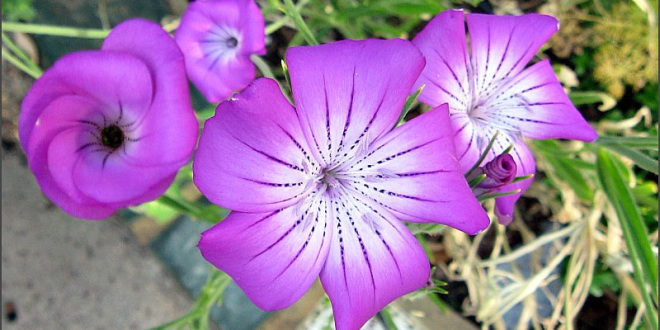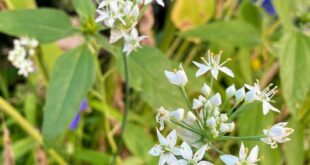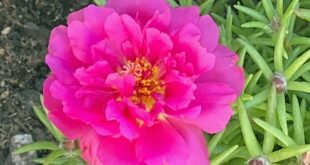Corncockle is a pretty flower that bobs in the wind on slender stalks. Warning: Probably should not be planted around small children. All parts of the plant are toxic to eat. But then again, so are many other common plants such as daffodils and foxgloves. I still recommend it for Sunnyvale gardens.
The Corncockle originated in Europe where it grew in wheat fields in the disturbed soil. The British used the word “corn” when referring to wheat. The word “cockle” is from the greek for “shell”. In the 19th century, it was very common because the corncockle seeds would be included in the harvested wheat seed and then resown the following season. Modern agricultural techniques have eliminated that so the corncockle is back to being rare.
Family: Caryophyllaceae (kar-ree-oh-fil-AY-see-ee) (Info)
Genus: Agrostemma (ag-roh-STEM-uh) (Info)
Species: githago (GITH-uh-go) (Info)
Category: Annuals
Height: 18-24 in. (45-60 cm), 24-36 in. (60-90 cm)
Spacing: 9-12 in. (22-30 cm)
Hardiness: Not Applicable
Sun Exposure: Sun to Partial Shade
Danger: All parts of plant are poisonous if ingested
Bloom Color: Magenta (Pink-Purple)
Bloom Time: Mid Spring, Late Spring/Early Summer, Mid Summer
Foliage: Herbaceous
Other details: May be a noxious weed or invasive. This plant is attractive to bees, butterflies and/or birds
Average Water Needs; Water regularly; do not overwater
Soil pH requirements: Unknown – Tell us
Patent Information: Non-patented
Propagation Methods: From seed; direct sow outdoors in fall
Seed Collecting: Allow seedheads to dry on plants; remove and collect seeds
Read more: http://davesgarden.com/guides/pf/go/1341/#ixzz3HZvTKRN1








